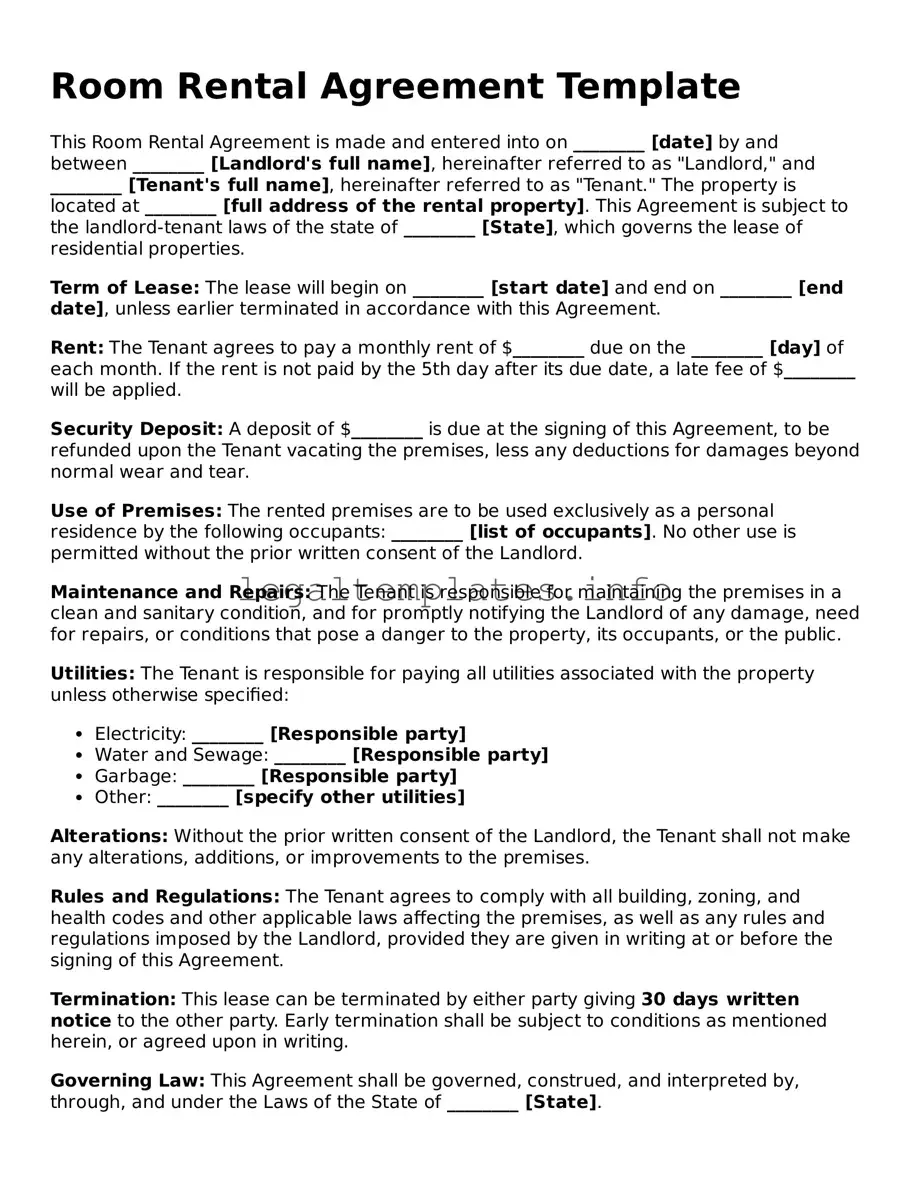Room Rental Agreement Template
This Room Rental Agreement is made and entered into on ________ [date] by and between ________ [Landlord's full name], hereinafter referred to as "Landlord," and ________ [Tenant's full name], hereinafter referred to as "Tenant." The property is located at ________ [full address of the rental property]. This Agreement is subject to the landlord-tenant laws of the state of ________ [State], which governs the lease of residential properties.
Term of Lease: The lease will begin on ________ [start date] and end on ________ [end date], unless earlier terminated in accordance with this Agreement.
Rent: The Tenant agrees to pay a monthly rent of $________ due on the ________ [day] of each month. If the rent is not paid by the 5th day after its due date, a late fee of $________ will be applied.
Security Deposit: A deposit of $________ is due at the signing of this Agreement, to be refunded upon the Tenant vacating the premises, less any deductions for damages beyond normal wear and tear.
Use of Premises: The rented premises are to be used exclusively as a personal residence by the following occupants: ________ [list of occupants]. No other use is permitted without the prior written consent of the Landlord.
Maintenance and Repairs: The Tenant is responsible for maintaining the premises in a clean and sanitary condition, and for promptly notifying the Landlord of any damage, need for repairs, or conditions that pose a danger to the property, its occupants, or the public.
Utilities: The Tenant is responsible for paying all utilities associated with the property unless otherwise specified:
- Electricity: ________ [Responsible party]
- Water and Sewage: ________ [Responsible party]
- Garbage: ________ [Responsible party]
- Other: ________ [specify other utilities]
Alterations: Without the prior written consent of the Landlord, the Tenant shall not make any alterations, additions, or improvements to the premises.
Rules and Regulations: The Tenant agrees to comply with all building, zoning, and health codes and other applicable laws affecting the premises, as well as any rules and regulations imposed by the Landlord, provided they are given in writing at or before the signing of this Agreement.
Termination: This lease can be terminated by either party giving 30 days written notice to the other party. Early termination shall be subject to conditions as mentioned herein, or agreed upon in writing.
Governing Law: This Agreement shall be governed, construed, and interpreted by, through, and under the Laws of the State of ________ [State].
IN WITNESS WHEREOF, the Parties have executed this Agreement on the date first above written.
Landlord Signature: ___________________________ Date: ________
Tenant Signature: ___________________________ Date: ________
Witness Signature (if required by state law): ___________________________ Date: ________
